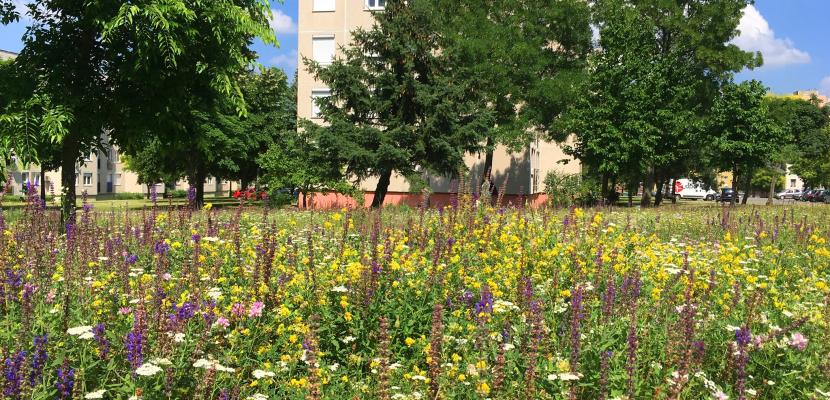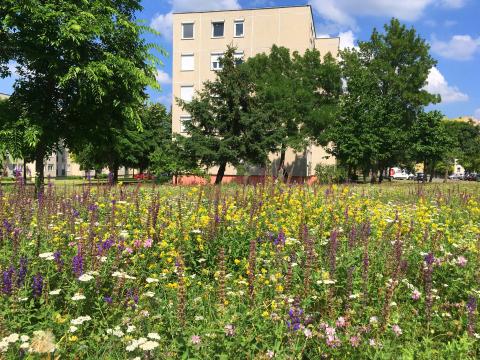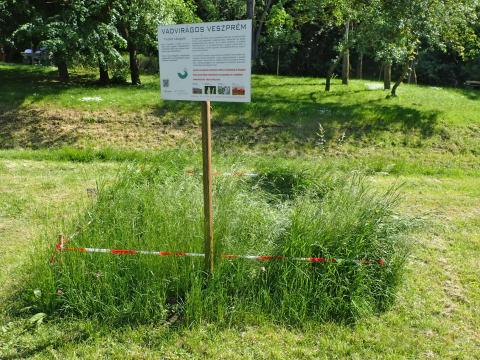
Wildflower Cities - Climate Adaptive Grassland Management in Urban Areas

About this good practice
The classical old school green space maintenance, with low-cut mowing every 21 days, killing the biodiversity, increasing workload for the practitioners, the challenges of climate change (heat islands, heat waves, heavy rains) have prompted a reform of the old practice and urged to look for new ways management.
Veszprem’s climate adaptive grassland management started in 2015 with preparation phase, exercising since 2016 and is ongoing since, proving its success
Veszprém city through its public utility company (VKSz) is continuously experimenting, developing the method. Its success lays on 3 pillars.
(1) political and expertise commitment: leadership of the city supports the VKSz to introduce new technology that exploits the advantages of green spaces in the cities (microclimate, combating heat island, enhancing biodiversity, etc.);
(2) Scientific background – cooperation with the Hungarian University of Agriculture and Life Sciences that tested 7 sample plots, suggested technological change and monitors the process
(3) Continuous information and involvement of the local community from the very begging in the experiment (info-boards, leaflets, special lectures, community festivals)
Expert opinion
Resources needed
When starting some financial resources should be dedicated to support the baseline research and the overall planning (15 000 EUR), for ongoing scientific survey the cost is 4000 EUR annually. But in fact, the annual expenditure of the grassland maintenance is reduced, with estimated savings of 20%.
Evidence of success
The reform of the grassland management results semi-natural grasslands with less demand on maintenance, high and growing biodiversity, increase the number of insects, esp. the pollinators, creating habitat for other species (e.g. leaving the tree leaves in heaps gives winter shelter for hedgehogs), it raises awareness and explains that these areas are good for the city as they attract pollinators and temperate the microclimate. The practice is one of the URBACT Good Practices from 2024.
Potential for learning or transfer
Transferring this practice to other cities could be particularly useful in water-scarce areas, contributing to sustainable urban green space management and mitigating the effects of climate change and is basically developed for continental climate conditions. Locally using ecologically well-adapted plant species, local native lawn associations and the method helps to enrich urban biodiversity.
Veszprém's climate-adaptive lawn management practice also works in Budapest, successfully reducing intensive mowing and increasing the resilience of the lawn. Drought-tolerant grasses are also planted in public parks in Budapest. Both cities adapt the practice to local climatic conditions, contributing to sustainable urban green space management and increasing resilience to climate change.
The partners from URBACT IV BiodiverCity project valued highly this practice requesting the presentation of the method.


